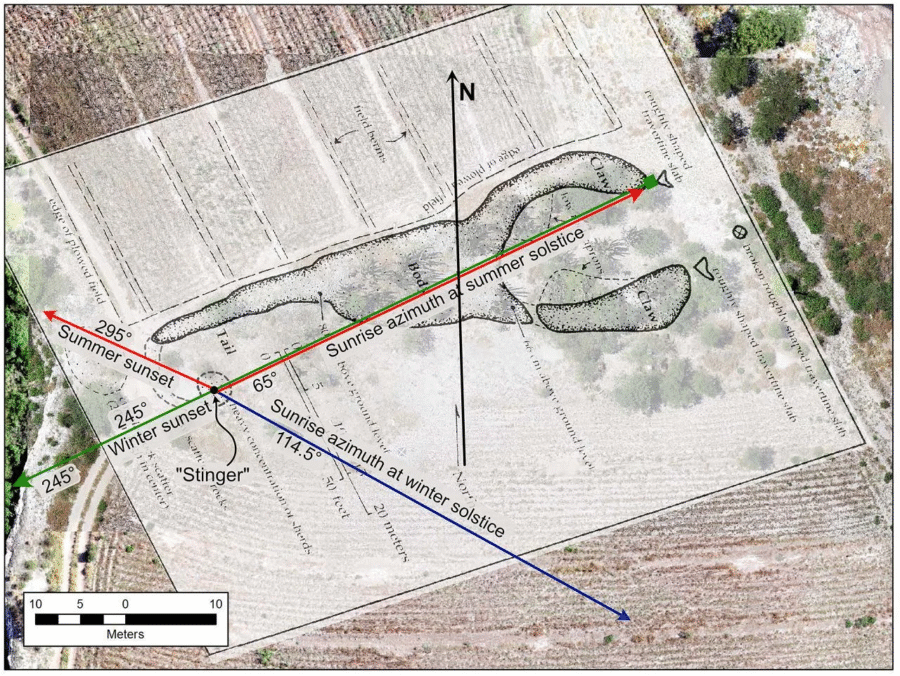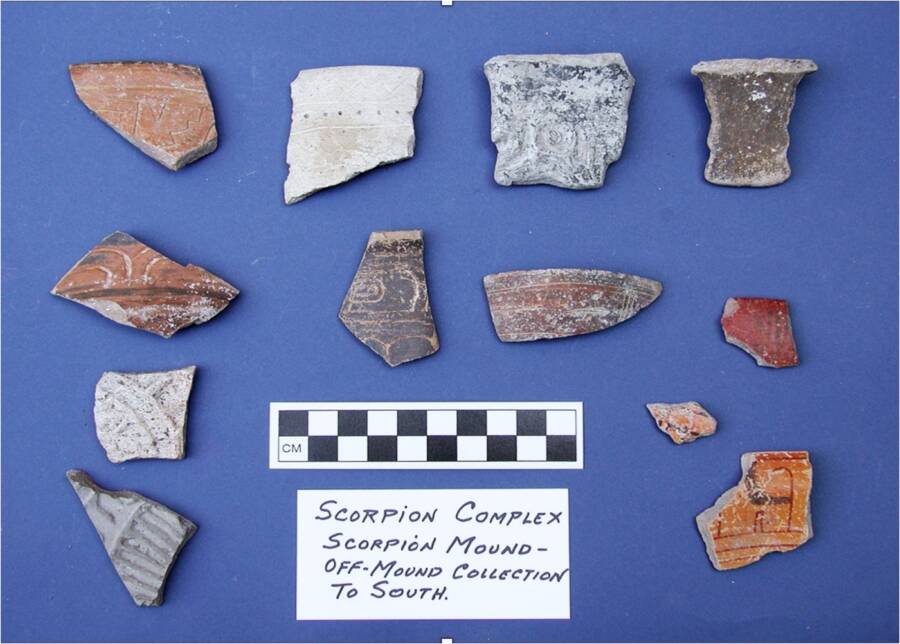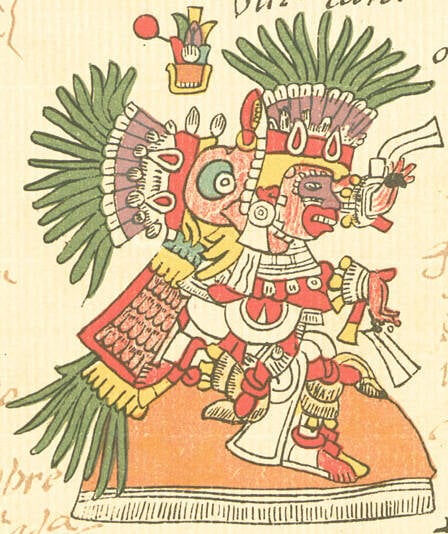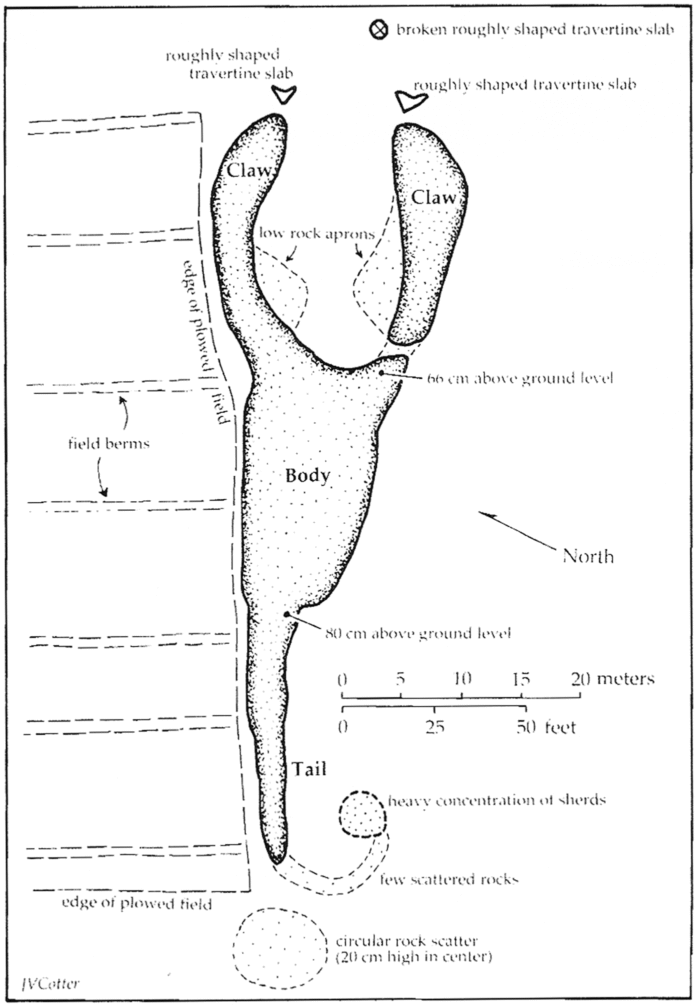Built using stones and soil sometime between 600 C.E. and 1100 C.E., this enormous effigy was likely used to track the Sun's path throughout the year.

J. Neely et al.The effigy mound was built in the shape of a scorpion, its stinger and claws aligned with the sunrise and sunsets on the solstices.
A new study suggests that a giant, scorpion-shaped mound built hundreds of years ago in Mexico may have been created to track the winter and summer solstices.
Originally documented in 2014, the scorpion mound sits in the Tehuacán Valley, about 160 miles southeast of Mexico City. Artifacts found at the mound allowed archaeologists to estimate that it was created sometime between 600 C.E. and 1100 C.E.
The existence of the scorpion mound not only indicates that pre-Columbian Mesoamericans were tracking astronomical events, but that this wasn’t exclusive to the elite or ruling class. Archaeologists also uncovered multiple buried objects near the stinger of the well-intact effigy mound that suggests fertility rituals were once carried out here as well.
How This Scorpion Mound Was Used — And Linked To An Important Deity

J. Neely et al.Some of the artifacts, believed to be used in fertility rituals, found near the scorpion mound.
The scorpion mound is about 205 feet long and once stood almost three feet tall. It’s one of 12 mounds that were part of a ceremonial complex. According to a new study published in Ancient Mesoameria, this complex may have been used to ritually observe both the winter and summer solstices.
The scorpion was formed with piled dirt in addition to some stone, making the site an effigy mound. This further adds to the rarity of the site, as effigy mounds are uncommon in Mesoamerica.
Alongside the effigy mound, archaeologists uncovered many artifacts that likely would’ve had ritual use, such as an incense burner and the fragment of a hollow figurine. They also unearthed bowls, jars, plate fragments, and molcajetes, bowls used for grinding food.
Researchers believe the scorpion mound was meant to depict Tlāhuizcalpantēcuhtli, a prominent deity in Aztec mythology that represented the planet Venus and was associated with rain and fertility.

Wikimedia CommonsA 16th-century rendering of Tlāhuizcalpantecuhtli, the Mesoamerican god associated with scorpions.
Further adding to its astronomical significance is the mound’s relationship to the solstices.
The Importance Of The Solstices In Pre-Columbian Mesoamerica
The summer solstice was an important event for Mesoamericans, especially as it relates to agriculture. It signified the beginning of the rainy season, meaning it was time to start planting.
The researchers concluded that in the days leading up to the solstice, the Sun would rise between the scorpion’s claws. This likely helped farmers know when to start getting their fields ready for the next season of crops.

J. Neely et al.A diagram of the scorpion mound found in Mexico’s Tehuacán Valley.
The winter solstice was also tracked using the scorpion mound. If a person stood at the edge of the northern or left claw on that day, they’d be able to see the sunset over the stinger.
It’s not uncommon for Mesoamerican architecture to be aligned with the solstices. What makes this particularly notable is its location. The mound sits among irrigation canals and agricultural fields, meaning it was used by farmers and not elite rulers.
“It is the first indication that knowledge and control of astronomical phenomena based on solar observations was not totally in control of the elite class,” James Neely, lead author of the study, told Live Science. “This points to the prehistoric campesinos [countryside farmers] having lived a life way of greater independence and self-determination from elite/state control as do their modern counterparts.”
After reading about the rare scorpion mound found in Mexico, take a look at these 25 photos of the Aztec pyramids. Then, learn about the Olmec Head statues of Mesoamerica.





